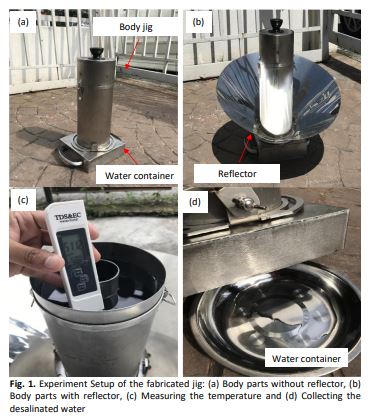Self-Desalination Seawater Jig Based on Solar Thermal Energy
DOI:
https://doi.org/10.37934/arfmts.91.1.92101Keywords:
Self-desalination seawater, water treatment, heat energy, latent heatAbstract
In this study, a new design of self-desalination seawater device by applying solar thermal energy has been proposed and characterized. Investigations were conducted to determine whether the fabricated device able desalinate saltwater efficiently. A custom-designed reflector with fixed and adjustable angle configurations was also included and both will be evaluated in terms of performance. The temperature, salinity, and conductivity of the saltwater during the desalination process were measured and compared from 9 am to 3 pm. The temperature averagely increases 20.5°C for 6 hours exposure. A device with an adjustable reflector able to confine the highest temperature which is up to 58°C. It was also shown that the heat energy grows proportionally with increasing temperature. A device with reflector shown able to confine the maximum heat energy which is 131.51 kJ which is 51.75% higher than without reflector. As a result, the latent heat required to convert salt water to steam decreased from 3.591 kJ/kg to 3.538 kJ/kg. In this regard, the fabricated device able to reduce the seawater salinity from 7651ppm to 123ppm, which a substantial 98 percent reduction. This result indicates that the proposed device with adjustable reflector can desalinate and convert saline water into safe drinking water.
Downloads
































